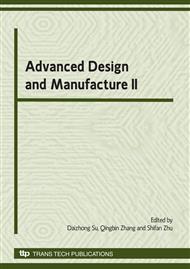p.677
p.681
p.685
p.689
p.693
p.697
p.701
p.705
p.709
Simulation of Diesel Electronic Control PPVI Fuel Injection System
Abstract:
The structure and properties of diesel fuel injection system directly influence the performance of diesel, and calculation and analysis are important methods to improve engine performance. So, by analyzing the structure, math models and working process theory of the electronic control PPVI fuel injection system, this paper founds initial and improved simulation models of the diesel electronic control PPVI fuel injection system, completes simulation and analysis. The simulation results show that the improved model has better cushion effect than the initial model by adding a constant pressure delivery valve between the nozzle and electromagnetic valve, what is more, the improved model can avoid the instability of the work state, such as second injection, cavitation and anomaly injection, etc., therefore, the diesel forms perfect unloading characteristic, and its performance has also been improved.
Info:
Periodical:
Pages:
693-696
Citation:
Online since:
October 2009
Authors:
Price:
Сopyright:
© 2010 Trans Tech Publications Ltd. All Rights Reserved
Share:
Citation:


